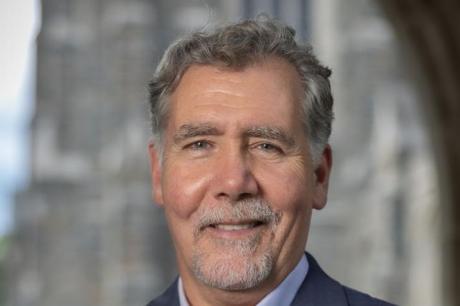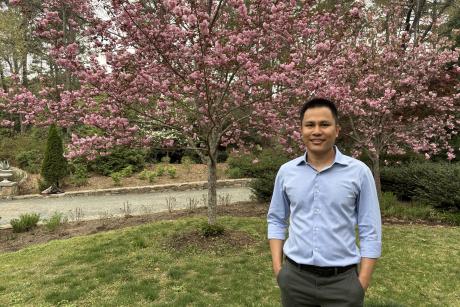Watch the full Think Global event on lessons from the COVID-19 vaccine rollout above.
Published October 16, 2023, last updated on October 17, 2023 under Around DGHI
In just three years, the world has gone from having no effective vaccines against COVID-19 to having several, with more than 13.5 billion doses administered worldwide, according to the World Health Organization. Yet that unprecedented rollout was also marked by inequities in supply and access.
So what can the world do better next time? That was the question for panelists during a DGHI Think Global event on Oct. 12. Four global experts shared insights on what worked and where steps are needed to improve pandemic response at the local, national and global levels.
“We saw tremendous scientific breakthroughs,” said Krishna Udayakumar, M.D., director of the Duke Global Health Innovation Center, who moderated tha panel. “The uptake of vaccines, whether in high or low- and middle-income countries, happened more quickly than in the history of any vaccine to be produced.”
But Udayakumar and other panelists noted the groundbreaking progress came with downsides.
Ian Thornton, senior program officer of vaccine access for The Bill & Melinda Gates Foundation, said there was little transfer of vaccine development technology from high- to low-income countries. Instead, most poor countries relied on donations of vaccines produced in high-income countries, either directly from the countries themselves or through COVAX, which was set up by the World Health Organization to secure vaccine doses for use in low-resource settings.
“Technology transfer was an opportunity that was missed, and we ended up having an oversupply,” Thornton said. “There’s a lesson here about the need to have regional manufacturing put in place. We [high-income countries] were so focused on our own supply challenges that we didn’t do an absolute good job of supporting other countries.”
Imran Mirza, a health specialist and global lead for UNICEF’s COVID-19 Program, applauded the expedited vaccine rollout, but said the pandemic exposed many health systems’ weak infrastructure to handle patient overflow and mitigate burnout for health workers.
“This is the time to build up those systems and what’s required such as human resources,” Mirza said, noting the world is still in a pandemic. “We need to start thinking about this now. All the risk is not gone, it’s still there.”
But the speedy arrival of COVID-19 vaccines, which were developed in less than one year, also holds lessons for future vaccine rollouts, the panelists noted. Wenhui Mao, Ph.D., assistant director of programs for the Duke Global Health Innovation Center, says the expediency of the vaccine allowed it to reach vulnerable populations much sooner. On average, some vaccines can remain in the research and development stage for up to a decade.
“Imagine if we could reduce this time by years,” she said. “It could save lives and protect people. Lots of innovative practice was used to promote the COVID-19 vaccine.”
Chizoba Wonodi, Ph.D., an associate scientist of global disease epidemiology and control at the Johns Hopkins Bloomberg School of Public Health, focused on where people received vaccine doses. In addition to hospitals, public health leaders turned facilities such as stadiums into vaccination sites and deployed mobile vaccination clinics to provide access for rural patients.
“Fixed posts are important to get people to vaccination sites,” Wonodi said, adding there’s still room for flexibility in that area. “Solutions for this can be more options for walk-in shots and arranging internet access [to make appointments] for those who need it.”
Udayakumar highlighted the importance of discussing COVID-19 holistically, through all phases of testing, treatment and immunization, as a guide for how the world can respond to future health crises.
“Understanding what happened from an end-to-end perspective will allow us to take some of these lessons to heart,” he said. “And be better in everything we do moving forward.”


